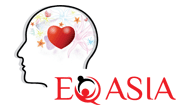Myers-Briggs Type Indicator (MBTI)
You will gain great benefit from an understanding of your own and other’s Personality Type from the MBTI. It helps in numerous areas like choice of career; understanding of how people react and work in both social and work settings; what are peoples’ comfort and discomfort zones during their interactions with others; what they need to do to “energize and recharge”; and what they can expect in their personal development as they mature.
How Is Psychological Type Theory Related To MBTI?
Type theory is based on personality type theory developed by Swiss psychiatrist Carl Jung. The dynamic character specified by type theory involves the interaction of a person’s four basic preferences. In developing the MBTI instrument, Isabel Briggs Myers and Katharine Briggs aim to make the insights of type theory accessible to individuals and groups. The MBTI and MMTIC instruments are based on Jung’s ideas about how different ways of perceiving and judging, in combination with different attitudes, describe different types of people. Perception and judgment are conceived of as mental functions; the term attitudes refer to orientation of energy and orientation to the external world. Personality types result from interactions among the four MBTI/MMTIC dichotomies. These dichotomies encompass four opposite domains of mental functioning: opposite ways of perceiving, opposite ways of judging, opposite attitudes in which preferred perception and preferred judgment are typically used, and opposite ways of relating to the world. The MMTIC is very much similar to MBTI, with the addition of the “U-band”. This is due to the developing TYPE of children, thus resulting in preference score landing within the band.
Uses Of Psychological Type
- Contribute to the intelligent rearing, teaching, counseling, and overall understanding of children.
- Contribute to the improvement of self-esteem, achievement, and social interaction through identification of individual strengths.
- Serves, as part of an overall battery, as an important tool in assessment in child and family therapy.
- Serves as a self-help tool for career planning and career change.
- Helps you understand your own work style, and provides ways to support and extend your own areas of strength to compensate for your areas of weakness.
- Leads to understanding the approaches and needs of those you work with, thus allowing you to resolve conflicts related type.
- Gives you starting points for negotiating so that people (you and others) get what they need and can do their best work.
- Provides a way to discuss interpersonal issues that have been avoided at work. Sometimes people simply haven’t known how to identify something that just “doesn’t seem right”, or how to talk about it without making things worse.
Contact us to benefit from this profiling tool.
